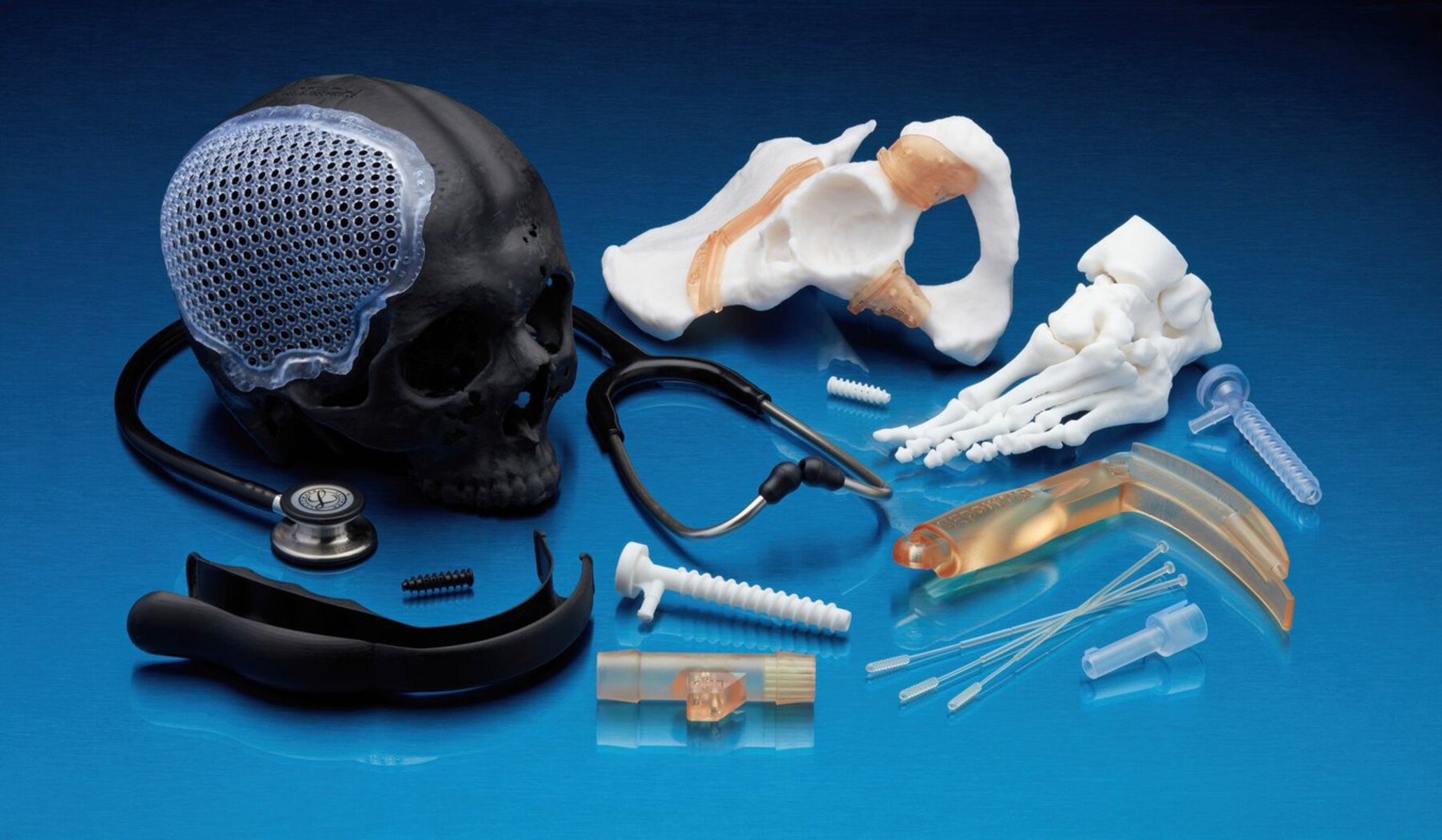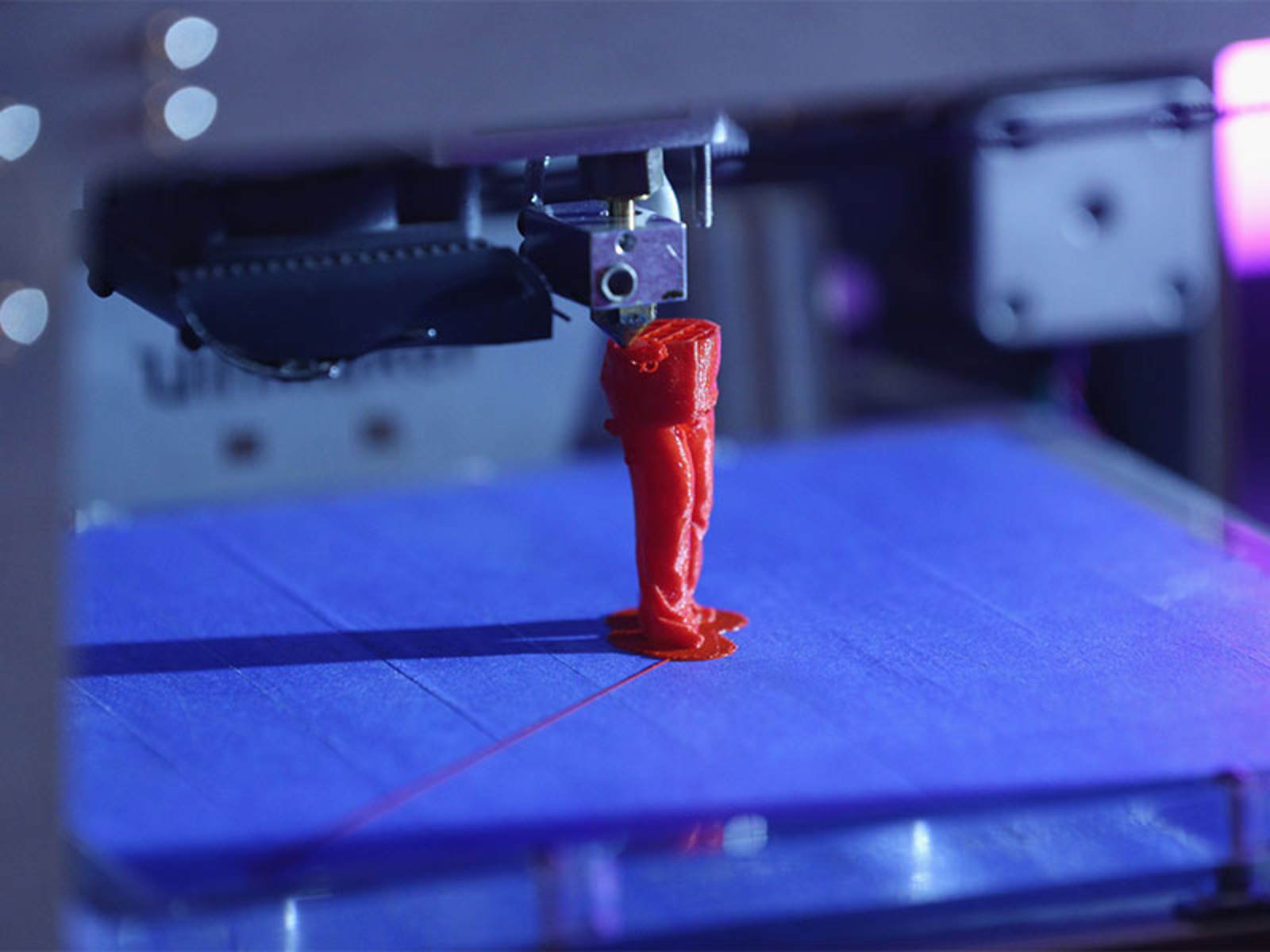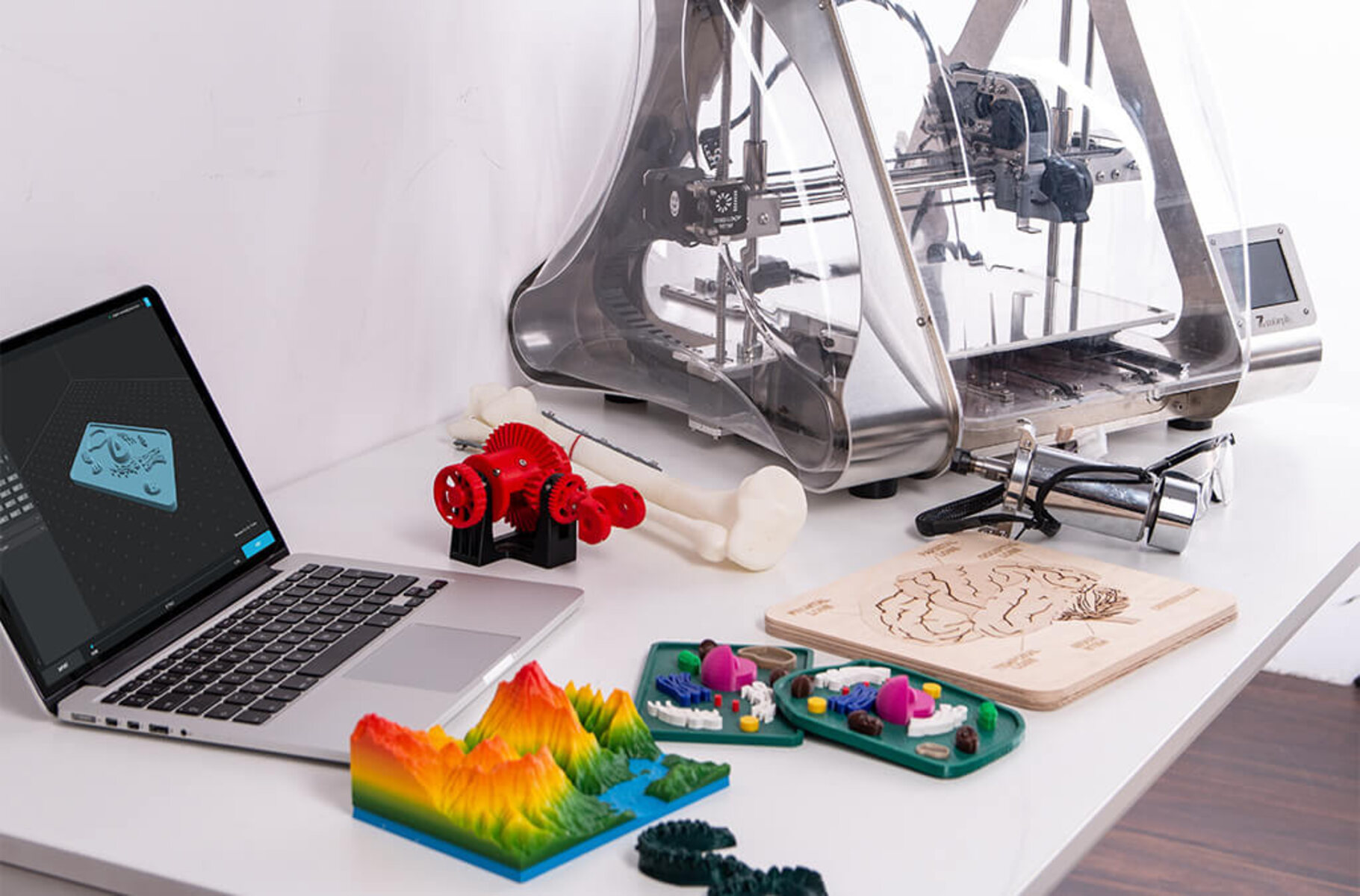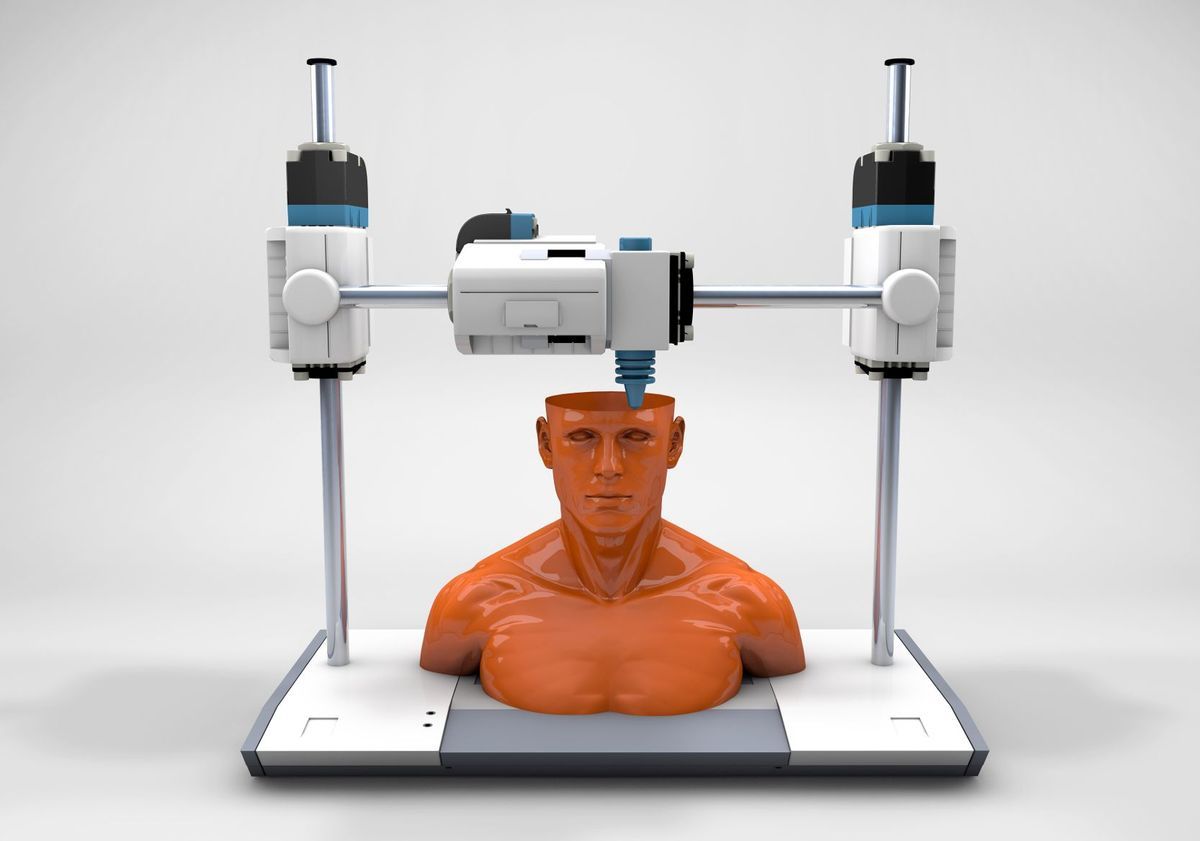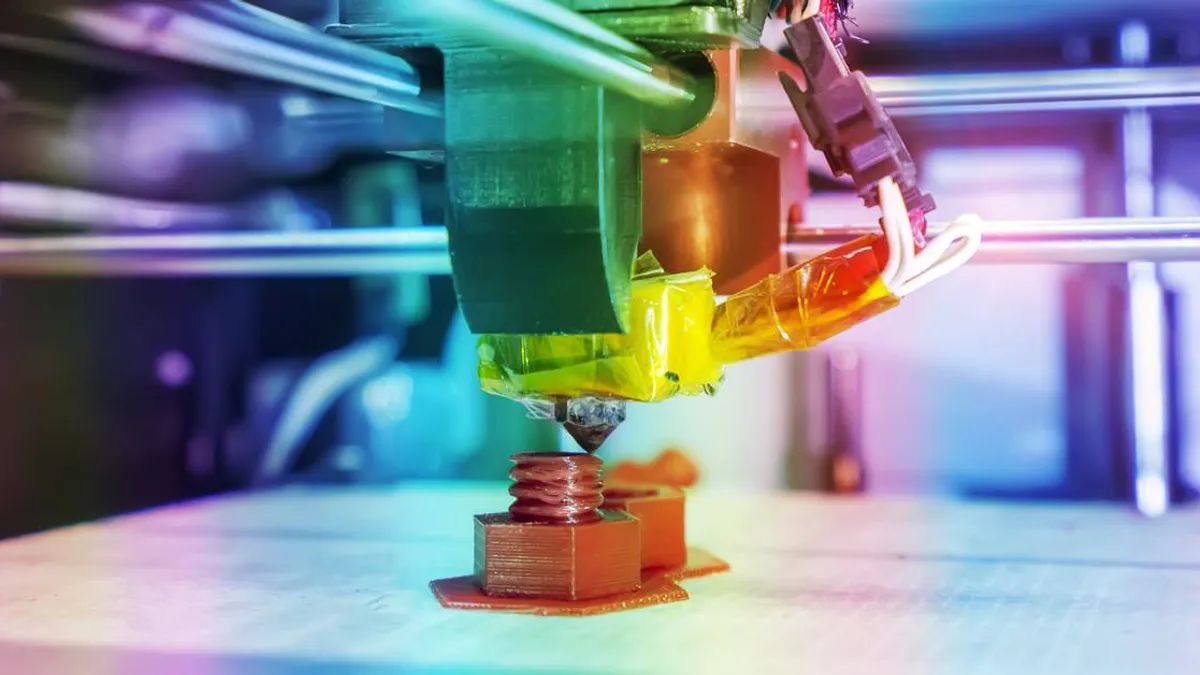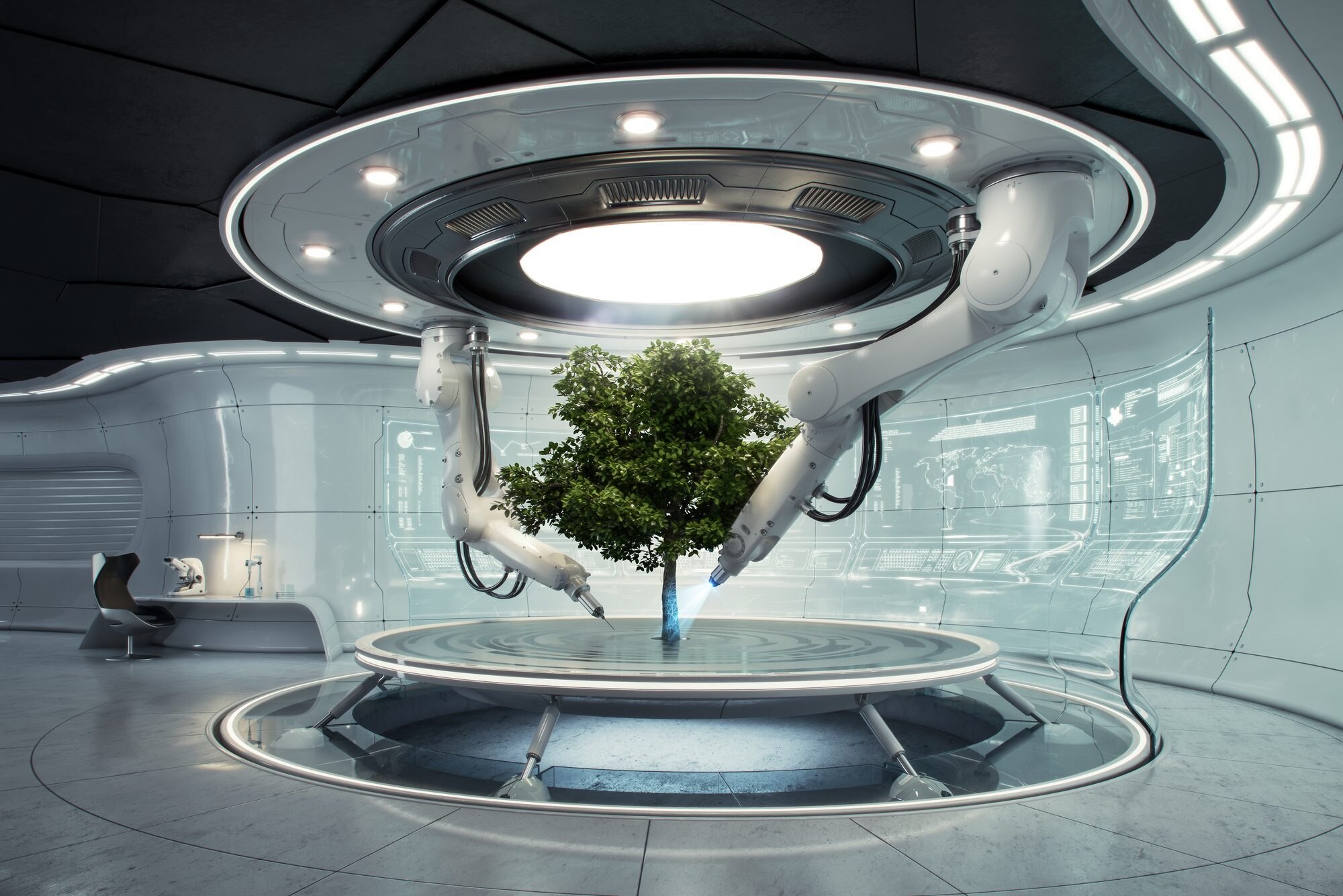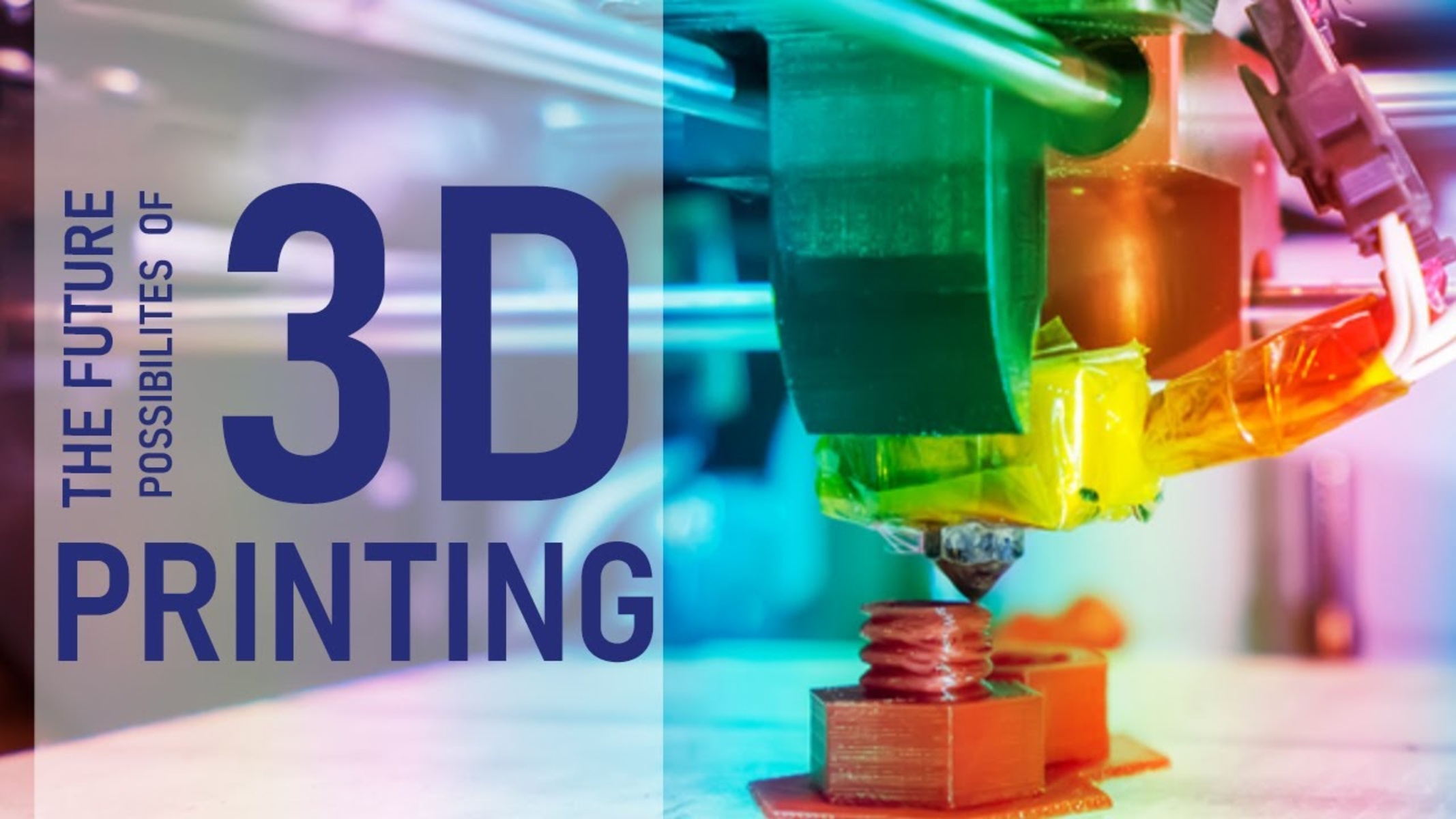Introduction
3D printing, also known as additive manufacturing, has revolutionized various industries, and the medical field is no exception. This cutting-edge technology has paved the way for innovative solutions in healthcare, enabling healthcare professionals to improve patient care, enhance surgical procedures, and advance medical research.
With 3D printing, complex anatomical structures can be replicated with ease, allowing for better planning, customization, and precision in medical treatments. It has opened new doors in surgical planning, education, and the development of personalized medical devices. From customized implants and prosthetics to the creation of medical models for training and research, the applications of 3D printing in the medical field are vast and promising.
In this article, we will explore how 3D printing is reshaping the medical industry, uncovering its various applications and advancements. From enhancing surgical planning and education to the production of medical implants, models, and even bioprinting tissues, the potential of 3D printing in medicine is unparalleled.
By harnessing the power of 3D printing technology, healthcare professionals are able to overcome challenges and offer more precise, personalized, and efficient healthcare solutions. This article will delve into the different uses of 3D printing in the medical field, highlighting its significance in improving patient outcomes and advancing medical research.
Enhancing Surgical Planning and Education
One of the significant applications of 3D printing in the medical field is its use in enhancing surgical planning and education. Traditional surgical planning relied heavily on 2D imaging techniques, such as X-rays and CT scans. However, these methods often fell short in providing a comprehensive understanding of complex anatomical structures.
With 3D printing, medical professionals can now create accurate and detailed 3D models of patient-specific anatomies. These models allow surgeons to better visualize and plan complex procedures, reducing the risk of errors during surgery. By having a physical representation of the patient’s anatomy in hand, surgeons can practice and simulate the procedure beforehand, improving their precision and reducing operating times.
Not only does 3D printing enhance surgical planning, but it also plays a vital role in medical education. Medical students and residents can gain hands-on experience by working with patient-specific 3D printed models. This immersive learning approach enables them to understand anatomical variations and practice surgical techniques in a safe and controlled environment.
Furthermore, 3D printing aids in the communication between surgeons, patients, and other healthcare professionals. Complex medical conditions or surgical procedures can be better explained through the use of 3D models. Patients can have a visual understanding of their condition, leading to improved patient satisfaction and informed decision-making.
In recent years, 3D printing has also been utilized in the development of surgical guides and tools. Surgeons can now tailor-made instruments specific to each patient’s needs, ensuring a more precise and efficient surgical outcome. These advancements not only improve patient outcomes but also contribute to reducing healthcare costs by minimizing the need for additional surgeries or interventions.
Overall, the integration of 3D printing in surgical planning and education has revolutionized the field of medicine. It has brought a new level of precision, effectiveness, and innovation to the operating room, ultimately benefiting both patients and healthcare professionals.
Customizable Medical Implants
One of the groundbreaking applications of 3D printing in the medical field is the production of customizable medical implants. Traditionally, implants were manufactured using standardized sizes, which often resulted in the need for additional surgeries or modifications to ensure proper fit and functionality.
With 3D printing, medical professionals can now create personalized implants that match the exact specifications of the patient’s anatomy. By utilizing patient-specific data from medical imaging, such as CT scans or MRIs, implants can be designed and fabricated specifically for each individual. This level of customization ensures a better fit, reduces the risk of complications, and enhances patient comfort and satisfaction.
Not only does 3D printing allow for the customization of implants, but it also opens the door to the creation of complex geometries that were previously impossible or challenging to manufacture using traditional methods. This enables the production of implants with intricate internal structures, such as porous scaffolds, which promote tissue integration and faster healing.
Furthermore, 3D printing offers the flexibility to use a wide range of biocompatible materials in the production of medical implants. From titanium and cobalt-chrome alloys to biodegradable polymers, the choice of materials can be tailored to suit the specific requirements of the implant, such as strength, flexibility, and compatibility with the surrounding tissues.
Customizable medical implants have revolutionized the field of orthopedics, allowing for the creation of patient-specific joint replacements, dental implants, and cranial implants. Additionally, 3D-printed implants have found applications in maxillofacial surgery, where complex reconstructive procedures often require personalized solutions.
The benefits of customized implants go beyond improving patient outcomes. By reducing the need for additional surgeries or modifications, 3D-printed implants contribute to cost efficiency in healthcare. Furthermore, they allow for faster recovery times and improved patient satisfaction, leading to a better quality of life for the patients.
Overall, 3D printing has revolutionized the production of medical implants, offering a new level of customization, precision, and functionality. As this technology continues to advance, we can expect even more innovative solutions to emerge, further enhancing patient care and outcomes.
Creation of Prosthetics
3D printing has made significant advancements in the field of prosthetics, bringing newfound hope and improved quality of life to individuals with limb differences. Traditional methods of creating prosthetics involve lengthy and costly processes, often resulting in standard-sized prosthetics that may not fit the individual’s needs perfectly.
With 3D printing, prosthetics can be custom-designed and fabricated to match the unique anatomy and functional requirements of each patient. By utilizing 3D modeling software and patient-specific measurements, prosthetists can create personalized prosthetic devices that offer a better fit, comfort, and functionality.
3D-printed prosthetics also allow for greater design flexibility, enabling the incorporation of personalized aesthetics and individualized features. Patients can choose custom colors, patterns, and even include personal touches such as engravings or artwork. This personalization aspect helps restore not only physical function but also boosts self-confidence and provides a sense of identity for individuals with limb differences.
Another significant advantage of 3D-printed prosthetics is cost-effectiveness. Unlike traditional manufacturing methods that require the creation of molds and specialized tools, 3D printing allows for on-demand production, reducing production time and material wastage. This makes prosthetics more accessible and affordable, particularly for individuals in developing countries or those without access to healthcare resources.
In addition, 3D printing allows for easy adjustments and modifications to prosthetics as the patient’s needs change. Growing children, for example, often require frequent adjustments to accommodate their developing bodies. With 3D printing, prosthetists can easily make necessary adjustments without the need for completely new prosthetic devices, making the process more efficient and cost-effective.
Furthermore, the advancements in 3D printing have also led to the development of functional prosthetics, such as bionic limbs. These high-tech prosthetics can incorporate sensors, electronic components, and even advanced robotics to provide individuals with a more natural range of motion and sensory feedback.
The transformative power of 3D printing in prosthetics extends beyond the physical aspect. It offers individuals with limb differences the opportunity to regain independence, engage in activities they enjoy, and improve their overall quality of life.
As technology continues to evolve, we can expect further advancements in 3D-printed prosthetics, including the integration of artificial intelligence and sensory technologies, enhancing functionality and usability even further.
Production of Medical Models
3D printing has revolutionized the production of medical models, providing healthcare professionals with a valuable tool for visualization, surgical planning, and patient education. Traditional methods of medical modeling, such as handmade replicas or CT scan reconstructions, often lacked the level of detail and realism required for precise anatomical understanding.
With 3D printing, medical professionals can now create highly accurate and intricate 3D models of patient-specific anatomies. By converting medical imaging data, such as CT or MRI scans, into three-dimensional models, healthcare providers can gain a comprehensive understanding of complex structures and plan surgeries with greater precision.
These 3D printed medical models allow surgeons to simulate and practice procedures before entering the operating room. By physically manipulating the model, surgeons can better visualize the anatomy, identify potential challenges, and develop strategies to overcome them. This level of preoperative planning reduces the risk of complications, minimizes operating times, and enhances overall surgical outcomes.
In addition to surgical planning, 3D printed medical models play a crucial educational role. Students, residents, and healthcare professionals can utilize these physical representations to gain a better understanding of anatomical variations and complex medical conditions. The tactile nature of these models enhances the learning experience, providing a hands-on approach that fosters a deeper comprehension of the subject matter.
Moreover, 3D-printed medical models can aid in patient education and communication. Complex medical conditions and treatment plans can be visually explained to patients using these models, facilitating their understanding and enabling them to make informed decisions about their healthcare. This transparency and involvement in the medical process contribute to improved patient outcomes and patient satisfaction.
3D printing has also opened up possibilities for the creation of multi-material and multi-colored medical models. This allows for the inclusion of different tissue types, such as bones, organs, and blood vessels, in a single model, providing a more comprehensive representation of the patient’s anatomy. This level of complexity and realism aids in the development of novel surgical techniques, medical research, and device testing.
Overall, the production of medical models through 3D printing has revolutionized the field of healthcare. It enables healthcare professionals to enhance their understanding, improve surgical outcomes, educate patients and students, and promotes innovation in medical research. As technology continues to advance, we can expect even more detailed and sophisticated medical models that will further advance patient care.
Drug Testing and Research
3D printing technology has made significant contributions to drug testing and research, revolutionizing the pharmaceutical industry and accelerating the development of new drugs. Traditional drug testing methods rely heavily on 2D cell cultures or animal models, which often fail to accurately replicate human biology and provide reliable results.
With 3D printing, researchers can create intricate 3D structures known as “organoids” or “tissue constructs” that closely mimic the complexity and functionality of human organs. These bio-printed models enable the testing of new drugs in a more realistic and reliable environment, allowing researchers to evaluate the effectiveness, safety, and potential side effects of new medications before conducting clinical trials.
By using patient-specific cells, 3D-printed tissue constructs also contribute to personalized medicine, allowing researchers to study the response of specific individuals to different drugs. This approach has the potential to revolutionize the field of precision medicine, where treatments are tailored to the individual patient’s specific needs and characteristics.
Additionally, 3D-printed models facilitate the development of drug delivery systems, such as implants or microspheres, that can be customized to release medication at optimal rates and target specific areas of the body. These systems enable better control over drug dosage, improving therapeutic outcomes and reducing side effects.
3D printing also plays a crucial role in the synthesis and formulation of new drug compounds. By using 3D printers capable of printing at a microscopic level, researchers can create precise drug formulations with controlled release properties. This allows for the development of novel drug delivery methods, including personalized medication and nanomedicine.
Moreover, 3D printing enables the rapid prototyping of medical devices used in drug delivery systems or experimental setups. This accelerates the research and development process, reducing time to market for new pharmaceutical products and medical devices.
Beyond drug testing and research, 3D printing has also facilitated the production of anatomical models for surgical training and simulation in pharmaceutical research and development. These models allow researchers and pharmaceutical sales representatives to demonstrate product efficacy and educate healthcare professionals about the proper use of medications.
Overall, 3D printing has significantly impacted the field of drug testing and research. It provides researchers with more accurate and reliable models for evaluating drug effectiveness and safety, allows for the development of personalized medicine approaches, and enhances the efficiency of drug production and delivery systems. The continued integration of 3D printing in pharmaceutical research promises to advance medicine, improve patient outcomes, and revolutionize the way drugs are developed and tested.
Tissue Engineering and Bioprinting
Tissue engineering and bioprinting are two emerging fields in medical research that have been greatly advanced by 3D printing technology. These innovative approaches aim to create functional, living tissues and organs for transplantation, regenerative medicine, and drug testing purposes.
Tissue engineering involves combining cells, biomaterials, and growth factors to create three-dimensional structures that mimic natural tissues. 3D printing plays a critical role in this process by providing the ability to precisely deposit these components in a layer-by-layer fashion, recreating the complex architecture of native tissues.
Bioprinting takes tissue engineering a step further by using specialized bioprinters to spatially arrange living cells and biomaterials in a predefined manner. By precisely controlling cell placement and organization, researchers can create tissues with enhanced functionality and complexity.
One of the primary advantages of 3D bioprinting is the ability to create patient-specific tissues and organs. By utilizing the patient’s own cells, the risk of rejection after transplantation is greatly reduced. This personalized approach holds tremendous potential for regenerative medicine, allowing for the creation of replacement organs without the need for donors or lengthy waiting lists.
Bioprinting also offers the opportunity to create tissue constructs with vascular networks, which are crucial for the survival and functionality of larger tissues and organs. By incorporating blood vessels into the printed structures, researchers aim to overcome the current limitations in tissue size and provide a means for oxygen and nutrient supply to the developing tissues.
Furthermore, bioprinting enables the precise deposition of multiple cell types and bioactive factors within complex tissue structures, facilitating the creation of functional tissues with heterogeneity. This capability is particularly important in the development of bioengineered organs, where different cell types must work together to perform specific functions.
3D bioprinting not only has applications in regenerative medicine but also plays a significant role in drug testing and discovery. By creating functional tissue models, researchers can study the effects of new drugs on specific tissues or organs, providing more accurate and reliable results compared to traditional 2D cell cultures.
The field of tissue engineering and bioprinting is still rapidly evolving, and significant challenges remain, such as vascularization, integration of printed tissues with the host, and long-term viability of the printed constructs. However, with continued advancements in 3D printing technology, material science, and cellular biology, the potential of tissue engineering and bioprinting to revolutionize healthcare holds great promise.
Challenges and Future Perspectives
While 3D printing has brought about significant advancements in the medical field, there are still several challenges that need to be addressed for its widespread adoption and further development.
One of the primary challenges is the regulatory approval process. As 3D-printed medical devices and implants become more complex and personalized, the existing regulatory frameworks need to adapt to ensure patient safety without hindering innovation. Standardization and guidelines specific to 3D printing in the medical field will be crucial for the seamless integration of this technology into clinical practice.
Another challenge lies in the scalability and cost-effectiveness of 3D printing for mass production of medical devices and implants. While 3D printing offers unmatched customization, it is still relatively slow and expensive compared to traditional manufacturing methods. Improvements in printing speed, efficiency, and the availability of more affordable materials will be necessary to make 3D printing economically feasible for large-scale production.
Additionally, the materials used in 3D printing for medical applications need to meet strict biocompatibility and durability standards. Research into biocompatible materials with suitable mechanical properties will be essential to ensure the long-term safety and functionality of printed medical devices and implants.
The integration of biological components such as live cells, tissues, or pharmaceutically active substances in 3D printed constructs presents its own set of challenges. Maintaining cell viability and functionality during the printing process, as well as enabling accurate spatial organization of multiple cell types, remain areas of active research and development.
Looking ahead, the future of 3D printing in the medical field is promising. Advancements in bioprinting will likely lead to the development of functional, transplantable organs and tissues on a larger scale. The ability to create complex vasculature networks within printed tissues will address some of the limitations in tissue size and functionality.
Moreover, 3D printing technology will continue to evolve, enabling the integration of sensors, electronics, and nanotechnology into printed medical devices. This convergence of technologies has the potential to further enhance the functionality and capabilities of 3D-printed medical solutions.
Collaboration between scientists, engineers, healthcare professionals, and regulatory bodies will be crucial in overcoming the challenges and driving the future of 3D printing in the medical field. By fostering interdisciplinary research and sharing knowledge, we can accelerate the development and translation of 3D printing technologies into practical applications that improve patient care and outcomes.
As ongoing advancements and innovations in 3D printing technology unfold, the future of medicine holds immense potential for personalized, precise, and patient-centric care.
Conclusion
3D printing has emerged as a transformative technology in the medical field, revolutionizing patient care, surgical planning, education, and research. From enhancing surgical precision and customization of medical implants to the creation of prosthetics and production of medical models, the applications of 3D printing are vast and impactful.
By utilizing this cutting-edge technology, healthcare professionals can improve outcomes for patients by providing personalized and precise solutions tailored to their individual needs. The ability to create patient-specific anatomical models has greatly enhanced surgical planning, reducing risks and improving surgical outcomes. Additionally, 3D printing has enabled the production of customizable medical implants, ensuring a better fit and functionality for patients.
Prosthetics have also been transformed with 3D printing, allowing for customized designs that improve not only physical function but also enhance self-confidence and provide a sense of identity for individuals with limb differences. Medical models created through 3D printing facilitate better visualization, education, and communication for both healthcare providers and patients.
3D printing also holds immense potential in drug testing and research, enabling more accurate models of human tissues and organs for studying the effectiveness and safety of new drugs. Furthermore, advancements in tissue engineering and bioprinting have paved the way for the development of functional, transplantable tissues and organs, bringing hope to those in need of organ transplantation.
While there are still challenges to overcome, such as regulatory frameworks, scalability, and material compatibility, the future of 3D printing in medicine looks promising. The ongoing advancements in technology, materials science, and collaborative research efforts will continue to push the boundaries of what is possible with 3D printing in healthcare.
As this transformative technology develops further, we can anticipate personalized and precise medical solutions becoming more accessible, affordable, and widespread. 3D printing has the potential to revolutionize patient care, improve surgical outcomes, and transform the field of regenerative medicine, ultimately leading to a future where customized healthcare solutions are the norm.







